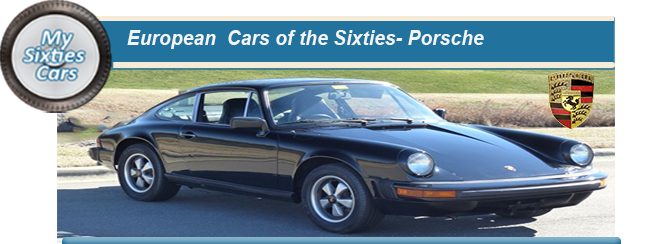
Porsche Cars were the brainchild of Ferdinand Porsche, a Stuttgart, Germany-based design consultant who enjoyed a very close and fruitful working relationship with Volkswagen.
Before he developed his first Porsche, Ferdinand had already guaranteed his place in the annals of motoring history, as the creator of the “ Beetle” for Volkswagen. The Beetle, launched in 1938, was one of the best-selling cars in history, with more than 21 million produced, remaining in production for more than forty years.
The Beetle, launched in 1938, was one of the best-selling cars in history, with more than 21 million produced, remaining in production for more than forty years.
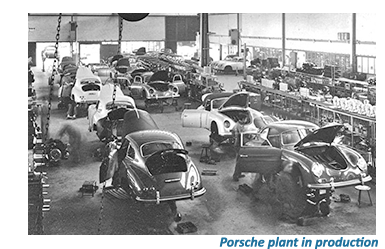 Although Porsche began to set up designs and mock-ups of what would be the first car to bear his name in the mid-Thirties did not make its maiden appearance till after World War Two.
Sadly Dr Porsche did not survive to see the vehicle that he designed to go into production, as he passed away early in 1951, at the age of 76.
By that time, the running of the company had been handed over to Dr Porsche’s his son Ferdinand Alexander (F. A.), known to all as Ferry, who supervised the construction of the first cars.
With no in-house production facilities yet available, Ferry had the chassis and bodies produced under license by Stuttgart -based master coachbuilders, Reutter Karosserie.
Although Porsche began to set up designs and mock-ups of what would be the first car to bear his name in the mid-Thirties did not make its maiden appearance till after World War Two.
Sadly Dr Porsche did not survive to see the vehicle that he designed to go into production, as he passed away early in 1951, at the age of 76.
By that time, the running of the company had been handed over to Dr Porsche’s his son Ferdinand Alexander (F. A.), known to all as Ferry, who supervised the construction of the first cars.
With no in-house production facilities yet available, Ferry had the chassis and bodies produced under license by Stuttgart -based master coachbuilders, Reutter Karosserie.
![]()
The drive trains were constructed by Volkswagen, where Porsche still held a significant interest.
This situation continued till the company opened their first plant, also situated in Zuffenhausen in 1953.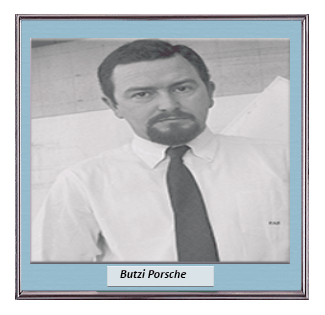 Having the facilities to invest in research, Porsche began to develop their engines in the mid-Fifties, allowing them to introduce more powerful versions of the 356, with a third and final version released in 1959.
When the 356B appeared, to many, the dominant resemblance that the vehicle to the VW Beetle was a little too close for comfort, with an air-cooled flat-four pushrod engine, and similarly designed suspension.
Initially, the Porsche 365 was available as either a coupe, cabriolet or a very exotic looking Sportster, with its iconic shallow screen.
Having the facilities to invest in research, Porsche began to develop their engines in the mid-Fifties, allowing them to introduce more powerful versions of the 356, with a third and final version released in 1959.
When the 356B appeared, to many, the dominant resemblance that the vehicle to the VW Beetle was a little too close for comfort, with an air-cooled flat-four pushrod engine, and similarly designed suspension.
Initially, the Porsche 365 was available as either a coupe, cabriolet or a very exotic looking Sportster, with its iconic shallow screen.
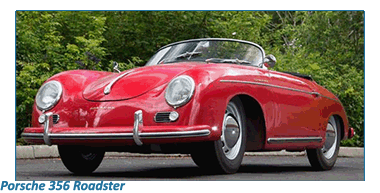 The early versions, which stood out for their split windscreens, were notoriously underpowered with a 1100cc air-cooled flat-four powertrain capable of generating just 40 bhp.
Technical advances for the “ A” included improved front suspension, enhanced steering, and a larger 1600 engine, although still, rear-mounted.
Having successfully overseen the launch of the 365 and nurtured its development through all of the Fifties, with only one significant upgrade, Ferry Porsche, stretched the wire just a little bit longer.
The early versions, which stood out for their split windscreens, were notoriously underpowered with a 1100cc air-cooled flat-four powertrain capable of generating just 40 bhp.
Technical advances for the “ A” included improved front suspension, enhanced steering, and a larger 1600 engine, although still, rear-mounted.
Having successfully overseen the launch of the 365 and nurtured its development through all of the Fifties, with only one significant upgrade, Ferry Porsche, stretched the wire just a little bit longer.
![]()
That came when Porsche introduced an updated final version of the 356 series in 1959.
Bearing a very marked resemblance to its predecessors, the Porsche 356B came in two new styles, an open-topped roadster, and a coupe; whose “notchback” rear spoiler was produced according to Porsche’s specification by Karman, one of West Germany’s leading coachbuilders.
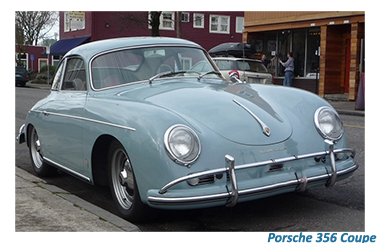 Even though demand for the 356B remained at a steady level well into the Sixties, Ferry Porsche was an astute enough businessman, and it was time to freshen up his model range.
Even though demand for the 356B remained at a steady level well into the Sixties, Ferry Porsche was an astute enough businessman, and it was time to freshen up his model range.
Referred to as the “Nine” series, the first model in the series, the 911, a rear-engined car, remained in production through the rest of the Sixties and for two decades more.
During that time, Porsche grew to become a formidable presence in the luxury sports automotive sector, continuously introducing more exotic and technologically advanced sports cars till this day.






